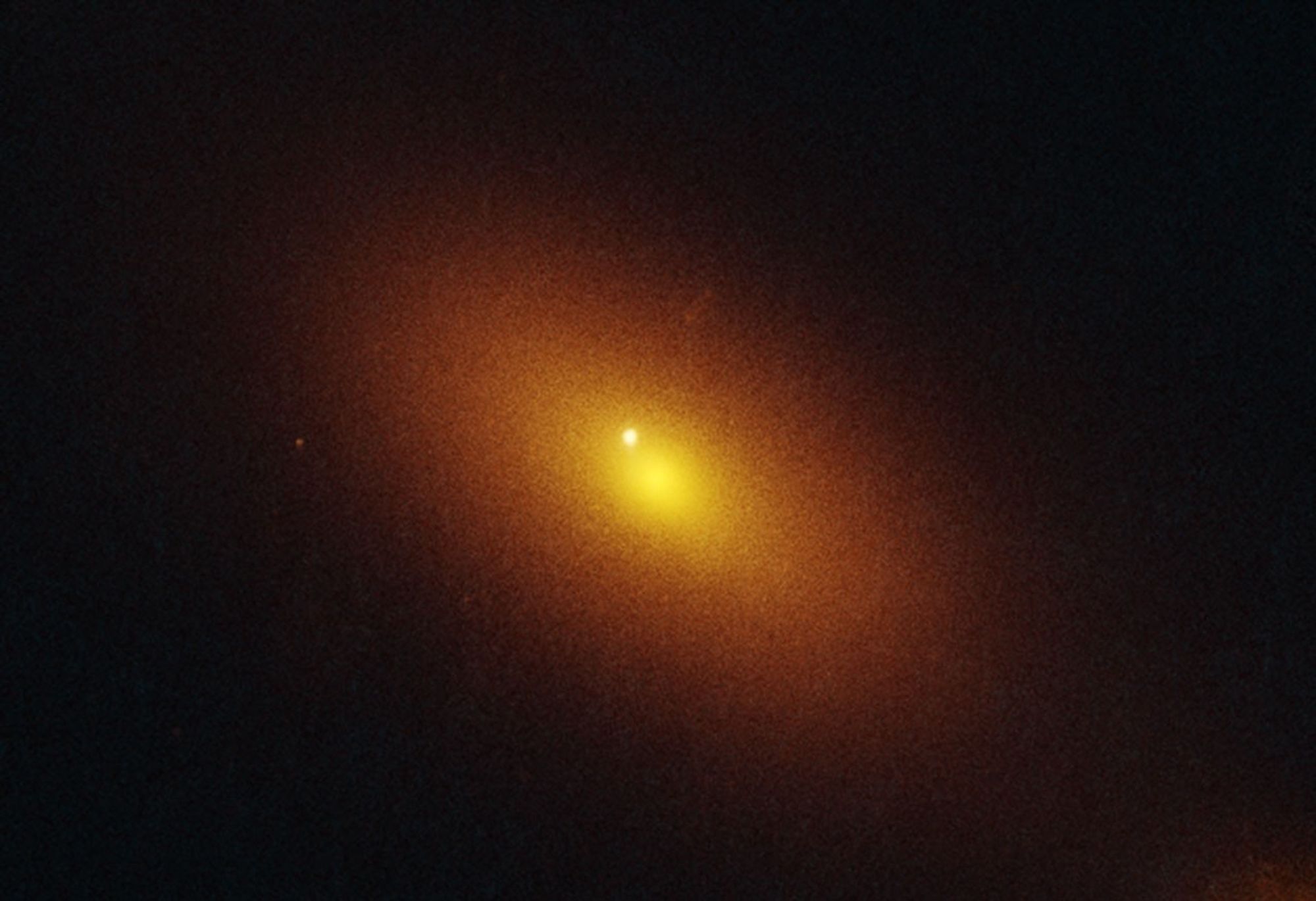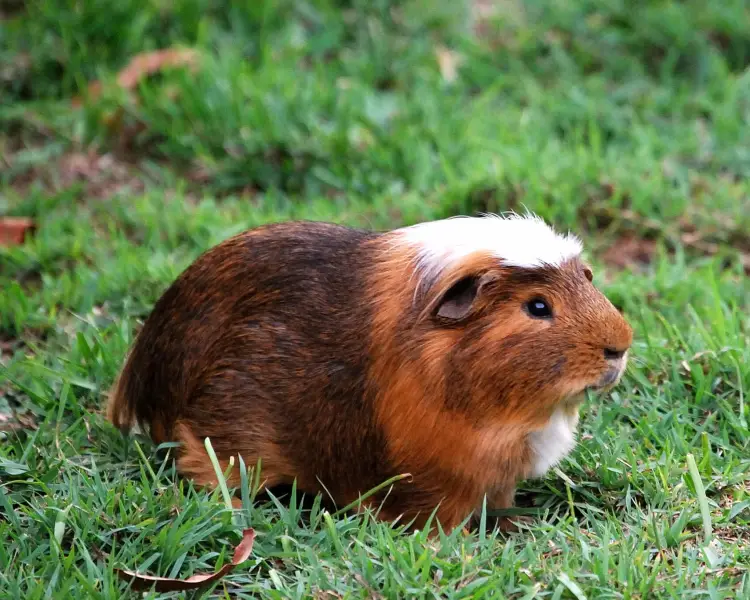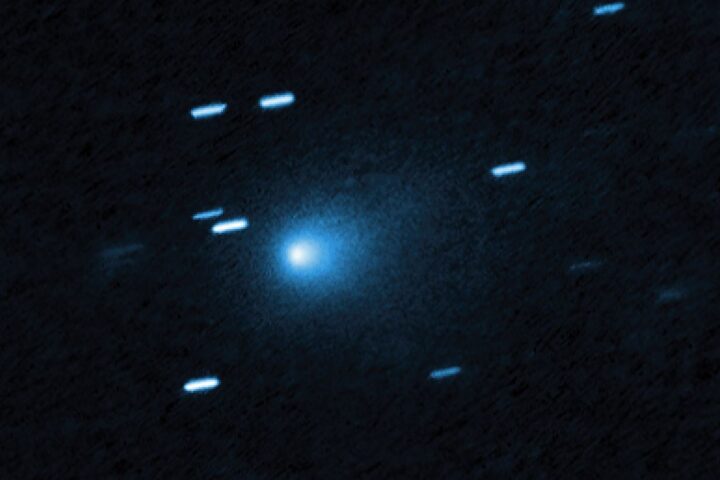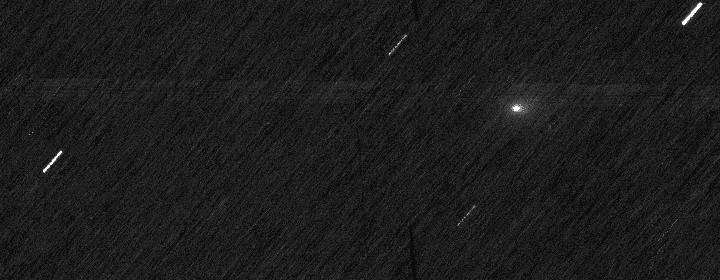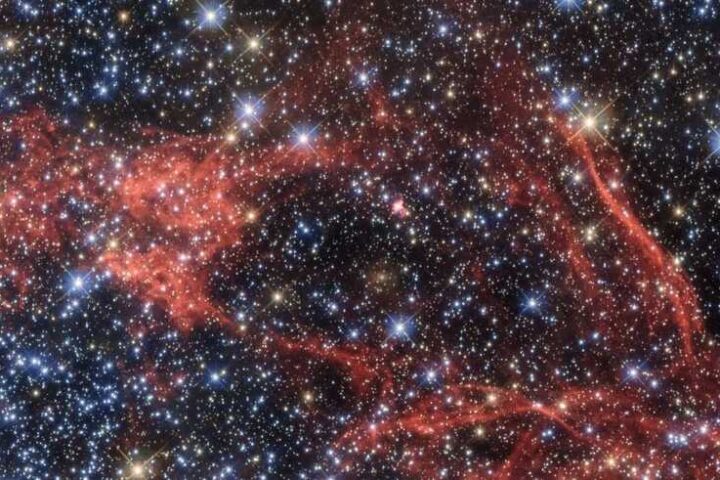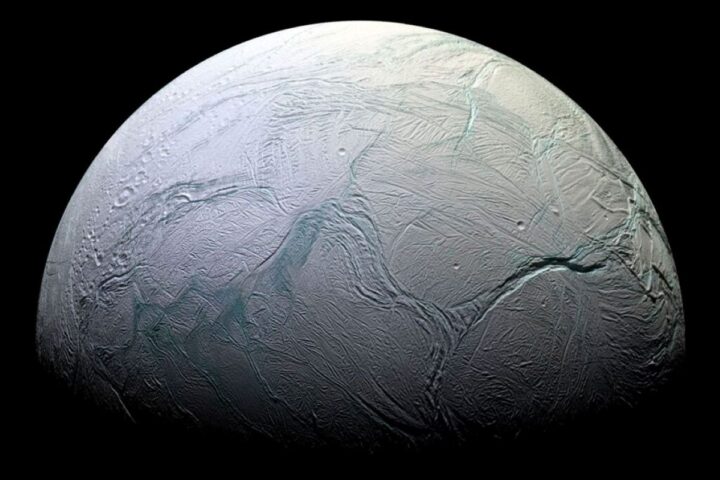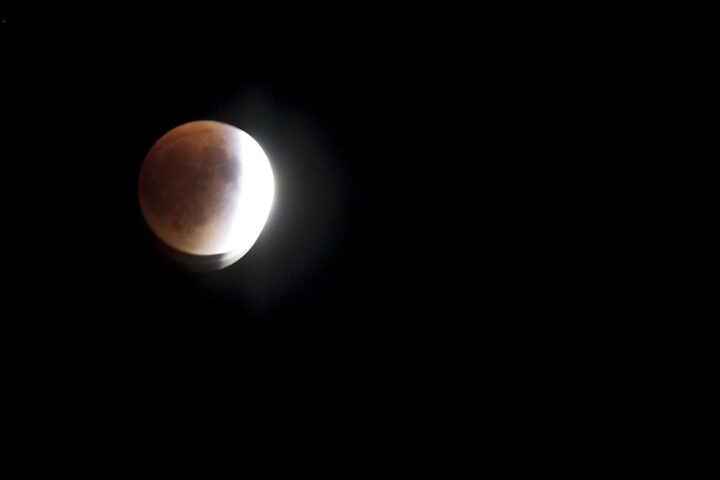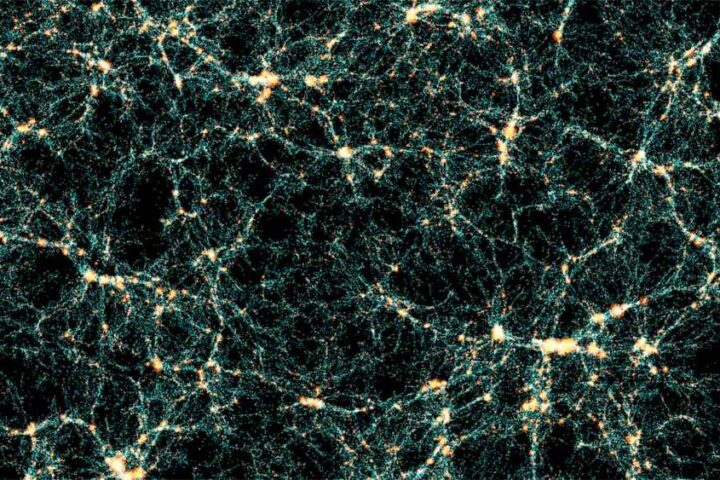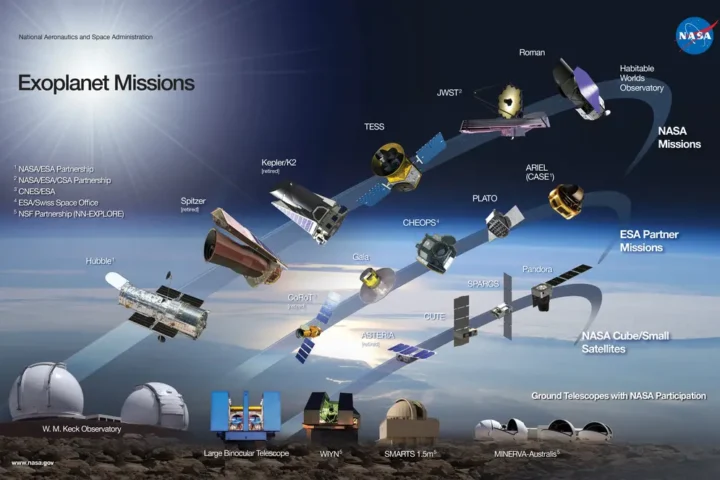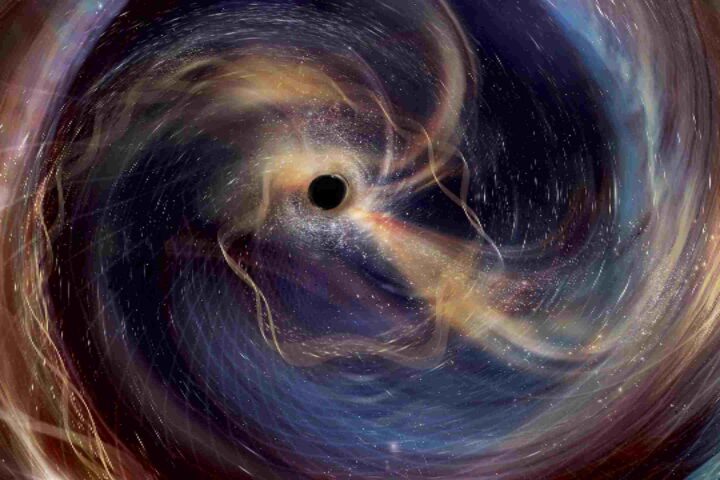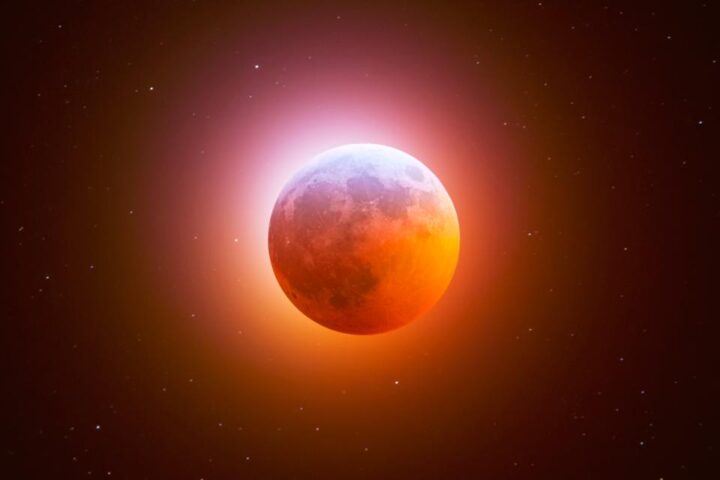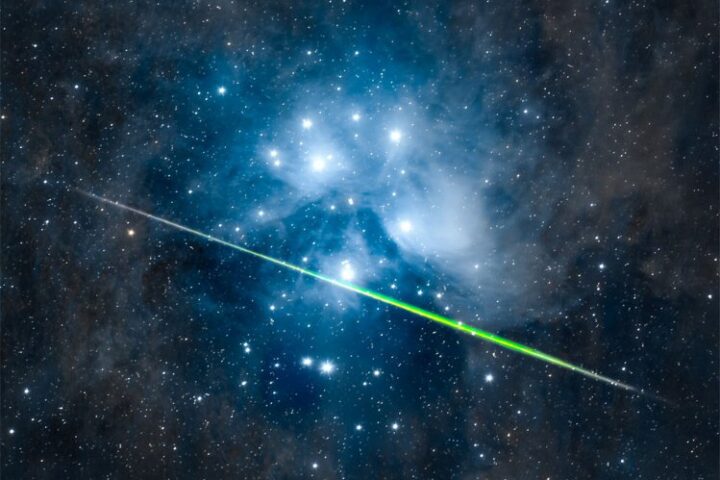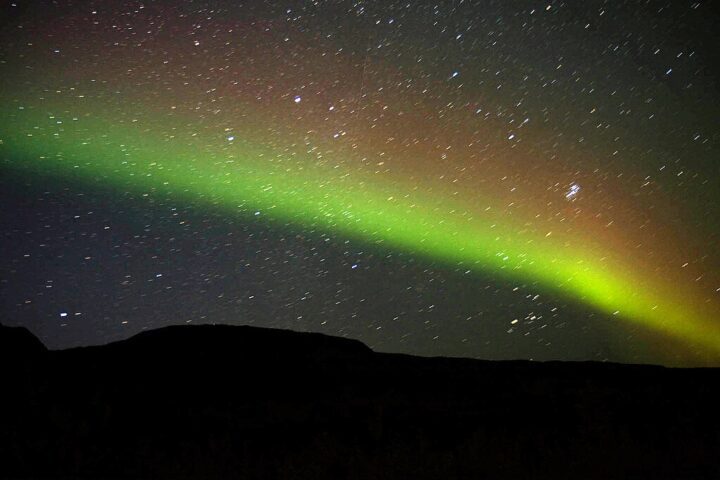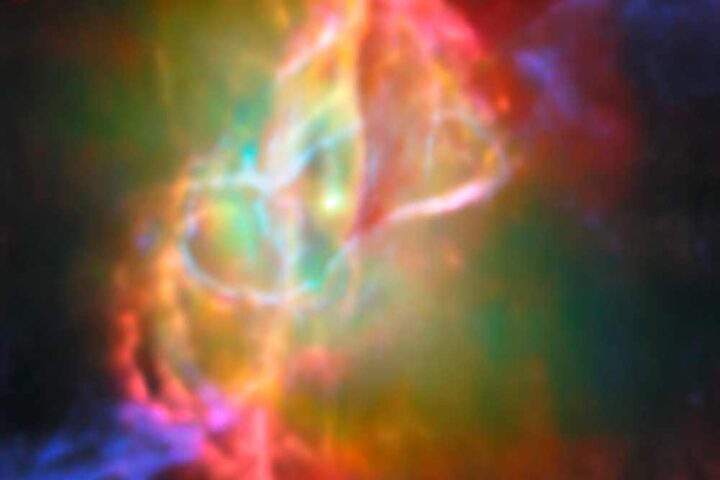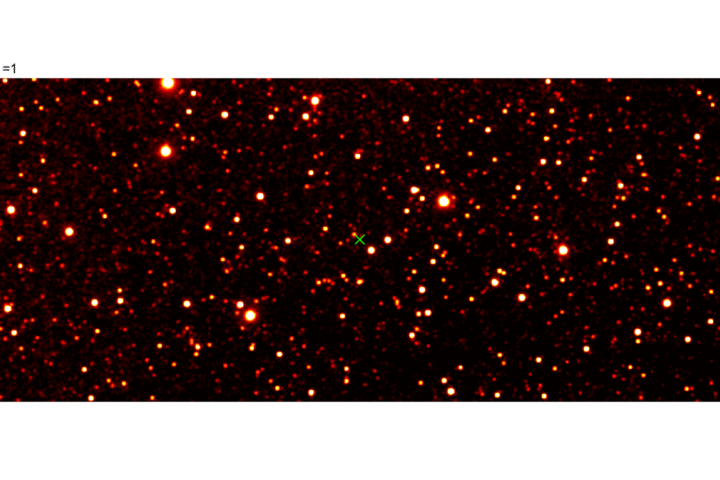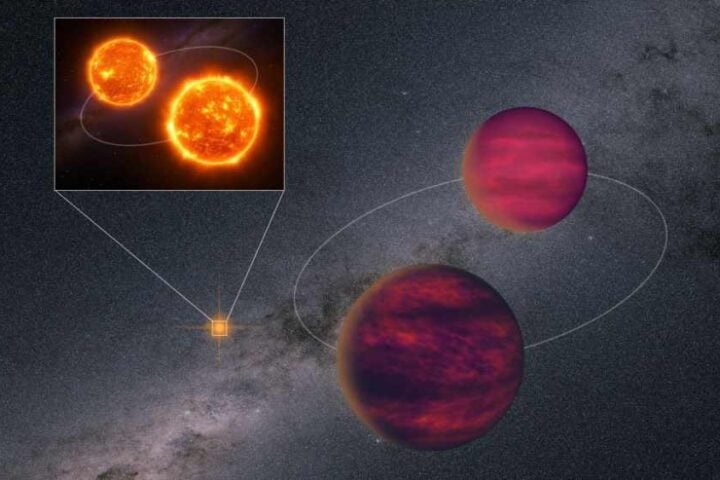NASA’s Hubble Space Telescope has spotted something extraordinary: a massive black hole wandering away from its galaxy’s center, caught in the act of tearing apart an unfortunate star. This discovery marks a significant first in astronomy and opens up new possibilities for finding more of these cosmic wanderers.
The black hole, weighing about a million times more than our Sun, sits unusually far from its galaxy’s heart – about 2,600 light-years away. Think of it as finding a lion far from its usual hunting grounds, yet still capable of catching prey.
“AT2024tvd is the first offset tidal disruption event captured by optical sky surveys,” explains Yuhan Yao from the University of California at Berkeley, who led the study. “It opens up the entire possibility of uncovering this elusive population of wandering black holes.”
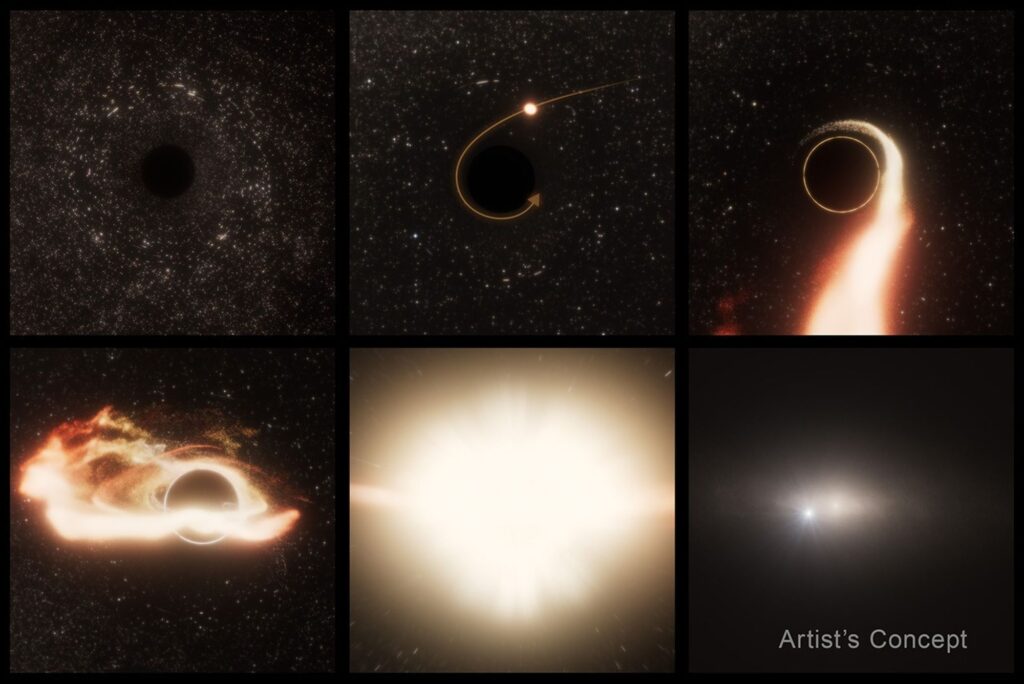
The drama unfolded when several ground-based telescopes spotted a bright flash as bright as a supernova. But this wasn’t a dying star – it was the black hole’s messy mealtime. When a star gets too close to a black hole, the intense gravitational pull stretches and shreds it like spaghetti, creating a brilliant display of light that astronomers can detect.
What makes this discovery even more intriguing is that this galaxy already has another, much larger black hole at its center – one that’s 100 times more massive than the wandering one. It’s like finding two heavyweight champions in the same ring, but they’re not fighting each other.
How did this black hole end up so far from the center? Scientists have two main theories. One suggests it got kicked out after a cosmic game of gravitational pool with other black holes. The other theory proposes it might be a leftover from when a smaller galaxy merged with the larger one billion years ago.
Similar Posts
“Tidal disruption events hold great promise for illuminating the presence of massive black holes that we would otherwise not be able to detect,” notes Ryan Chornock, associate adjunct professor at UC Berkeley. These events are rare – a massive black hole typically only catches and eats a star once every 30,000 years.
The discovery required the combined effort of multiple telescopes. While ground-based surveys first spotted the flash, it took Hubble’s precise vision and Chandra X-Ray Observatory’s specialized view to confirm this wasn’t just another space flash in the pan.

This finding isn’t just an astronomical curiosity. It’s the first direct evidence of something scientists have long suspected – that some supermassive black holes can wander from their galaxies’ centers. Out of about 100 similar star-eating events recorded so far, this is the first one caught happening away from a galaxy’s center.
The wandering black hole might eventually spiral toward the galaxy’s center and merge with its larger cousin. For now, it continues its solitary journey through space, only revealing itself when it catches and devours an unlucky star that strays too close.
The research team’s findings will soon appear in The Astrophysical Journal Letters, adding another chapter to our understanding of these cosmic giants and their behavior in the vast space of our universe.
